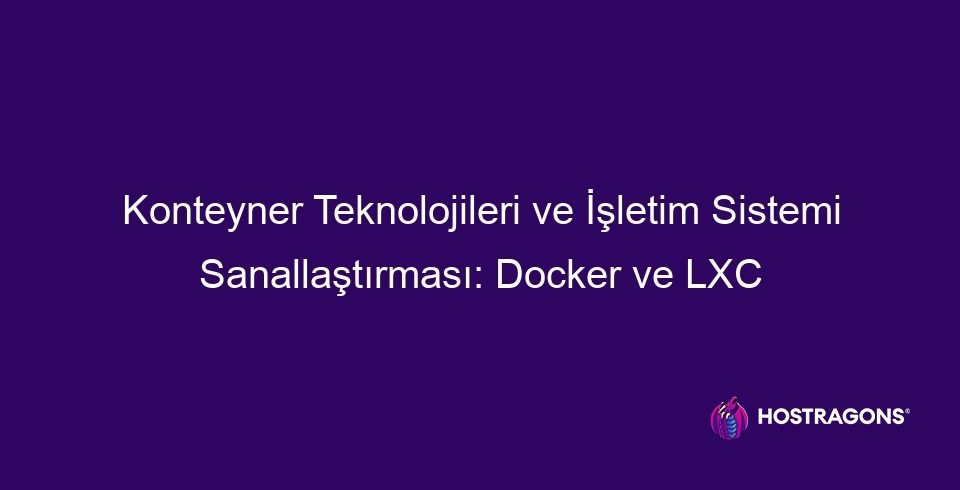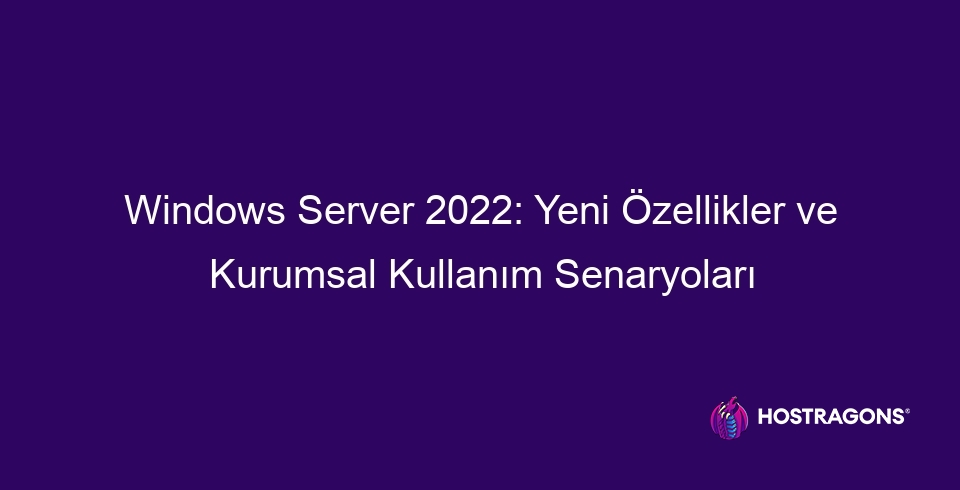Free 1-Year Domain Offer with WordPress GO Service
This category contains information about various operating systems used on web servers and personal computers. It contains detailed content about the features, installations, updates and optimizations of popular operating systems such as Windows, Linux, macOS.

Container Technologies and Operating System Virtualization: Docker and LXC
This blog post takes an in-depth look at container technologies, a cornerstone of modern software development and deployment. It explains what container technologies are and how popular tools like Docker and LXC work. It details the role of Docker in application development and LXC's role in system virtualization. It also discusses the deployment advantages, usage areas, and future of container technologies. It compares Docker and LXC and touches on container management tools. By presenting how Docker can be used in application development, summarizing key points, and providing implementation recommendations, it aims to empower readers to effectively utilize container technologies. Overview of Container Technologies Container technologies have revolutionized modern software development and deployment. Applications and all their dependencies...
Continue reading

ChromeOS: Google's Lightweight Operating System and Its Uses
ChromeOS stands out as Google's lightweight and fast operating system. This blog post defines ChromeOS, examining its lightweight advantages and key features. Focusing on the user experience, it addresses a wide range of uses, from education to business. The application ecosystem and tips for working efficiently with ChromeOS are presented, while also exploring the system's limitations and challenges. After specifying the necessary system requirements, the future prospects for ChromeOS are evaluated, highlighting its potential. ChromeOS: Definition as Google's Operating System ChromeOS is a Linux-based, open-source operating system developed by Google. Focusing on web-based applications and cloud services, this operating system differs from traditional operating systems...
Continue reading

FreeBSD and OpenBSD: Alternative Unix-Based Operating Systems
This blog post takes an in-depth look at two important alternative Unix-based operating systems: FreeBSD and OpenBSD. It explains in detail what these systems are, their origins in the Unix world, and the key differences between them. It covers a wide range of topics, from system requirements to OpenBSD's prominent security features to FreeBSD's performance advantages. It also addresses common misconceptions about both systems, aiming to provide readers with accurate information. The post also touches on the fundamentals of network management in OpenBSD, discusses what users can expect from these systems, and ultimately offers an assessment of which system is more suitable for each user profile. What are FreeBSD and OpenBSD? Basic Concepts FreeBSD and OpenBSD, Unix...
Continue reading

Best Operating Systems and Installation Guide for Raspberry Pi
This comprehensive blog post takes a detailed look at the best operating systems and installation processes for the popular Raspberry Pi single-board computer. It provides information about what the Raspberry Pi is, why it's popular, and the most popular operating systems. Installation steps are explained step-by-step, and different operating systems are compared. It also covers customized operating system options, common errors, project ideas, developer tips, success stories, and usage suggestions. In short, it's a guide for anyone looking to get started in the Raspberry Pi world. What is a Raspberry Pi and Why Choose It? The Raspberry Pi is a credit card-supported...
Continue reading

Windows Terminal and PowerShell 7: The Modern Command-Line Experience
Windows Terminal is an indispensable tool for developers and system administrators, providing a modern command-line experience. This blog post explains what Windows Terminal is and why it's important, detailing its integration with PowerShell 7. It provides a step-by-step guide to installing Windows Terminal, covering topics such as customizing the workspace, quickly using commands in PowerShell 7, and comparing different features. It also provides best practices, debugging tips, user experience, and feedback on how to get the most out of Windows Terminal. Finally, it highlights the advantages of Windows Terminal and provides insights into future developments. What is Windows Terminal and Why Is It Important? Windows Terminal is a multi-command-line...
Continue reading

Android Operating System Architecture and Android Security Model
This blog post provides an in-depth look at the architecture and security model of the popular Android operating system. It examines in detail what Android is, its core components, and the features of its security model. It also covers methods for improving Android operating system performance and key considerations during application development. Enriched with security best practices, up-to-date data, and frequently asked questions, this post is a comprehensive resource for anyone looking to understand and use Android effectively. The conclusion highlights Android's constantly evolving nature and the importance of security measures. What is the Android Operating System? The Android operating system is a platform developed by Google for mobile devices such as smartphones and tablets...
Continue reading

iOS vs Android: A Detailed Comparison of Mobile Operating Systems
The iOS vs. Android rivalry is one of the most frequently asked questions in the mobile world. This blog post offers a detailed comparison of the two operating systems. It covers many critical points, from the fundamental differences between iOS and Android to ease of use, developer experiences, and security features. Factors such as app ecosystems, performance analysis, and pricing are also examined to guide users in deciding which system to choose. Furthermore, recorded statistics are used to assess which system is more popular. Ultimately, this comprehensive comparison will help you make an informed choice. Overview of Mobile Operating Systems Mobile operating systems are systems that manage the hardware and software resources of mobile devices such as smartphones and tablets,...
Continue reading

Windows Server 2022: New Features and Enterprise Usage Scenarios
Windows Server 2022 offers significant innovations and improved performance for businesses. In this blog post, we examine what Windows Server 2022 is, why it's important, and the key innovations it brings. It covers in detail the factors that affect performance, enterprise usage scenarios, and security features. It also covers the role of management tools, storage options, system requirements, potential challenges, and how to get the most out of Windows Server 2022. It provides a comprehensive guide for businesses to strengthen their server infrastructures and adapt to modern requirements. What is Windows Server 2022 and Why Is It Important? Windows Server 2022 is the latest version of Microsoft's server operating system family, designed to meet the modern needs of businesses.
Continue reading

Lightweight Linux Distributions: A Guide to Reviving Old Hardware
Lightweight Linux distributions are an ideal solution for revitalizing older, low-end hardware. This blog post focuses on why Lightweight Linux is the best choice for older hardware and the best distributions. The key features of Lightweight Linux distributions, tips for improving performance, and a step-by-step installation process are explained. The importance of resource efficiency is emphasized, while applications and additional productivity-enhancing tools are introduced. Ultimately, Lightweight Linux shows how to bring your old hardware back to life. Why Choose Lightweight Linux for Revitalizing Old Hardware? Old hardware can become increasingly slow and unusable when faced with the increasing resource demands of new operating systems and applications. However,...
Continue reading

How Does the Linux Kernel Work? A Technical Overview
This blog post provides an in-depth review of the Linux Kernel. It first explains what the Linux Kernel is and its importance, then delves into its historical development and operating principles in detail. It then examines the Linux Kernel's fundamental components and structure to understand how this complex system functions. It lists the necessary requirements and recommended development tools for those who want to work with the Linux Kernel, and addresses common errors. Practical tips for exploring and understanding the Linux Kernel are presented, and a summary of its importance and future is provided at the end of the post. What is the Linux Kernel and Its Importance? The Linux Kernel is the heart of an operating system, providing the fundamental interaction between hardware and software. It utilizes computer resources...
Continue reading

